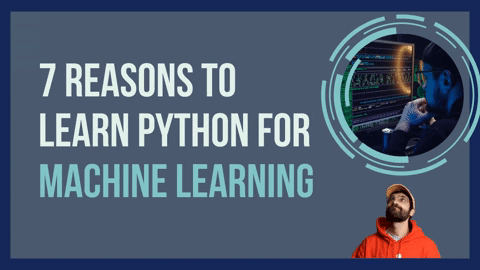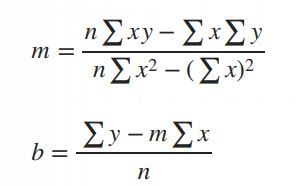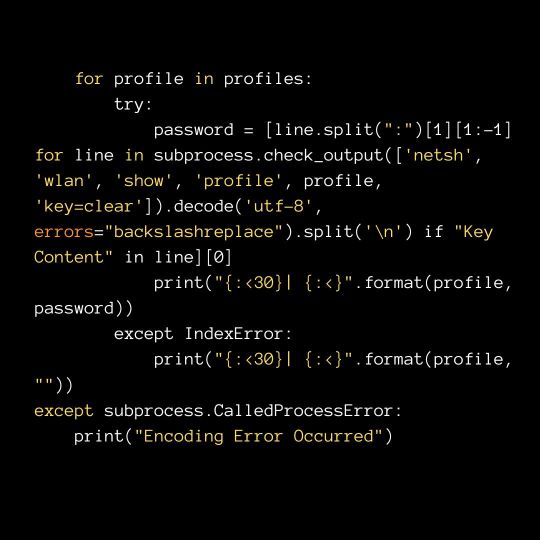#Python for machine learning
Explore tagged Tumblr posts
Text
Master Python Programming
Introduction to Python Programming
Python is a versatile programming language that has gained immense popularity in the field of data science and machine learning. Whether you are a beginner looking to learn the basics or an experienced programmer delving into advanced data analysis techniques, mastering Python is essential. In this comprehensive guide, we will walk you through the fundamental concepts and advanced topics in Python programming for data science.
Python programming has become a cornerstone in the world of technology. From web development to data analysis, machine learning, and automation, Python is a versatile language that opens a plethora of opportunities for anyone who masters it. Whether you are a college student looking to enhance your programming skills or an IT professional aiming to expand your knowledge base, learning Python can significantly benefit your career. In this blog post, we will delve into the essential aspects of mastering Python programming, providing you with a comprehensive guide to kickstart your journey into the world of Python.
Understanding Python Basics
Installing Python and Setting Up Development Environment
To start your Python journey, the first step is to install Python on your system and set up a development environment. You can download the latest version of Python from the official website and follow the installation instructions based on your operating system. Once installed, you can use popular Integrated Development Environments (IDEs) like PyCharm or Jupyter Notebook for coding.
Basic Syntax and Data Types
Python is known for its simple and clean syntax, making it easy to read and write code. It supports various data types such as integers, floats, strings, lists, tuples, dictionaries, etc. Understanding these basic data types is crucial for writing efficient Python code.
Control Structures and Loops
Control structures like if-else statements, loops (for and while), and functions help in controlling the flow of a Python program. Mastering these control structures is key to writing structured and organized code that executes efficiently.
Variables and Operators:
In Python, you can assign values to variables and perform operations using different operators like arithmetic, comparison, logical, and assignment operators. Mastering variables and operators is fundamental to writing efficient code in Python.
Dive Deeper into Python Programming
Once you have a solid understanding of the basics, you can delve deeper into various aspects of Python programming that will enhance your skills and knowledge. Let us explore some advanced topics in Python:
1. Functions:
Functions are essential for organizing code into reusable blocks. With Python, you can create functions using the def keyword and pass arguments to them. Understanding functions allows you to write modular and scalable code.
2. Libraries and Modules:
Python has a vast ecosystem of libraries and modules that provide ready-made solutions for various tasks. Libraries like NumPy, Pandas, Matplotlib, and TensorFlow are widely used in data analysis and machine learning. Learning how to import and use libraries will streamline your coding process.
3. Object-Oriented Programming (OOP):
Python supports object-oriented programming, allowing you to create classes and objects. This paradigm helps in organizing code in a more structured and efficient manner. Understanding OOP concepts like inheritance, polymorphism, and encapsulation will elevate your programming skills.
4. Error Handling:
Handling errors gracefully is crucial in Python programming. You can use try-except blocks to catch and manage exceptions, ensuring that your code runs smoothly even in the presence of unforeseen errors.
5. File Handling:
Python provides robust file handling capabilities, allowing you to read from and write to files. Understanding how to work with files in Python is essential for tasks like data processing and storage.
Working with Data in Python
Data manipulation is a core aspect of data science, and Python provides powerful tools for handling different types of data structures.
Data Structures in Python
Python offers built-in data structures like lists, tuples, and dictionaries that are widely used for storing and organizing data. Additionally, libraries like NumPy provide support for multidimensional arrays, while Pandas offers data frames for handling structured data.
Data Analysis and Visualization Techniques
Exploratory Data Analysis (EDA) is an essential step in any data science project, helping to understand the underlying patterns and relationships in the data.
Exploratory Data Analysis (EDA) with Python
Descriptive statistics and data visualization techniques play a crucial role in EDA. Python libraries like Matplotlib and Seaborn enable users to create insightful visualizations that aid in data interpretation and decision-making.
Advanced Python Programming for Data Science
Beyond the basic syntax and data structures, advanced Python programming concepts are essential for complex data analysis tasks.
Functions and Modules in Python
Writing custom functions and using pre-built Python modules are key skills for enhancing productivity and code reusability. Additionally, understanding exception handling and debugging techniques can help in troubleshooting errors effectively.
Machine Learning with Python
Python is the go-to language for machine learning projects, given its extensive libraries and tools for implementing various algorithms.
Introduction to Machine Learning
Supervised and unsupervised learning are common types of machine learning approaches that Python supports. The Scikit-Learn library offers a wide range of algorithms for building predictive models.
Practical Application of Python Programming
To truly master Python programming, you need to apply your knowledge to real-world projects. Here are some practical applications of Python that will help you sharpen your skills:
Web Development:
Python's frameworks like Django and Flask are popular choices for web development. Building web applications using Python will give you hands-on experience in creating dynamic and responsive websites.
Data Analysis:
Python's libraries like NumPy, Pandas, and Matplotlib are widely used in data analysis and visualization. Working on data analysis projects will familiarize you with handling datasets, performing statistical analysis, and creating insightful visualizations.
Machine Learning:
Python's library, TensorFlow, is a powerful tool for building machine learning models. Delving into machine learning projects will enable you to understand algorithms, train models, and make predictions based on data.
Automation:
Python can be used for automating repetitive tasks, such as file operations, data processing, or system maintenance. Developing automation scripts will enhance your efficiency and productivity in various workflows.
Conclusion
Mastering Python programming is not just about learning syntax and concepts; it is a journey of continuous exploration and growth. By understanding the basics, delving into advanced topics, applying your knowledge to practical projects, and embracing a mindset of lifelong learning, you can become proficient in Python programming and unlock a world of opportunities in the tech industry. So, roll up your sleeves, dive into Python, and let your coding journey begin!
Remember, the key to mastery lies in consistent practice, willingness to learn, and a passion for coding. Python is a versatile language that empowers you to create, innovate, and solve complex problems with ease. Embrace the power of Python, and watch your skills soar to new heights in the ever-evolving tech landscape. Happy coding!
1 note
·
View note
Text
Why learn Python for Machine Learning

Unleash the potential of Python for machine learning: Explore 7 convincing motives that make Python an indispensable tool for shaping the future of AI and machine learning. Explore the best Python courses in Delhi.
#Python for machine learning#learn python programming#Python courses in Delhi#Python course in Delhi#Python training in Delhi#Python training institutes in Delhi#Python training institute in Delhi
0 notes
Text
Python vs. Java: The Preferred Choice for Machine Learning
Machine learning has revolutionized the way we approach data analysis and decision-making. As businesses and researchers dive into this transformative field, the choice of programming language becomes crucial. Python and Java are two prominent contenders, but Python has emerged as the preferred choice for machine learning tasks. In this comprehensive comparison, we will explore the strengths and weaknesses of Python and Java in the context of machine learning, highlighting why Python takes the lead in this exciting battle.
Python: The King of Machine Learning
Rich Ecosystem of Libraries
Python's impressive ecosystem of libraries has given it a significant edge in the machine learning arena. Libraries like NumPy, Pandas, Scikit-learn, and TensorFlow provide extensive tools and functionalities, making complex tasks more accessible and accelerating the development process.
Simplicity and Readability
One of Python's defining features is its simplicity and readability. Its elegant syntax allows data scientists and developers to express ideas concisely and clearly. This readability promotes collaboration and code maintainability, making it an attractive choice for machine learning projects.
Rapid Prototyping and Experimentation
Python's interactive nature and quick prototyping capabilities enable data scientists to experiment with different algorithms and models effortlessly. This rapid iteration fosters innovation and leads to more effective solutions.
Strong Community and Support
Python's growing popularity in the machine learning community has resulted in a vibrant and supportive user base. A wealth of tutorials, forums, and resources are readily available, making it easier for newcomers to get started and for experts to share knowledge.
Java: The Challenger in Machine Learning
Robustness and Performance
Java's robustness and efficiency have long been its strong suits. Its statically-typed nature and compilation process enable Java applications to perform exceptionally well, making it a contender for computationally intensive machine learning tasks.
Enterprise-Ready and Scalable
Java's reputation as an enterprise-level language with excellent scalability makes it a preferred choice for businesses dealing with large-scale machine learning projects and big data analytics.
Compatibility and Integration
Java's "write once, run anywhere" philosophy allows applications to be deployed across various platforms without modifications. This cross-platform compatibility is advantageous for machine learning deployments in diverse environments.
Python vs. Java: The Verdict for Machine Learning
While Java has its strengths in robustness, performance, and enterprise scalability, Python surpasses it in the realm of machine learning. Python's rich library ecosystem, simplicity, rapid prototyping capabilities, and strong community support give it an undeniable advantage. The ease of learning and the ability to quickly experiment with ideas make Python an ideal language for machine learning enthusiasts and professionals alike.
For those seeking a language to excel in machine learning tasks, Python is the ultimate choice. Its dominance in the field is reflected in the thriving machine-learning community, the abundance of powerful libraries, and the countless success stories from researchers and businesses worldwide. Embrace Python as your machine learning language, and unleash the full potential of data-driven innovation.
Conclusion
In the Python vs. Java battle for machine learning supremacy, Python reigns as the ultimate champion. Its versatile and user-friendly nature, coupled with an extensive library ecosystem and a supportive community, positions it as the go-to language for machine learning enthusiasts and experts alike. While Java remains a solid choice for certain applications, Python's dominance in the field continues to grow, setting the stage for exciting innovations and breakthroughs in the world of data-driven solutions. Embrace Python's capabilities and stay ahead of the curve in the dynamic realm of machine learning.
Python is widely acclaimed for its prominence in the Machine Learning domain. At LearNowx, we emphasize integrating Python's power into the realm of AI and Machine Learning, giving you an edge in this rapidly growing field.
Are you eager to master Python, the preferred choice for Machine Learning? Look no further! Enroll now in the LearNowx Python Training Course, and unlock the gateway to endless possibilities in the world of programming and AI.
#Python vs. Java#ai development#Machine Learning#python programming#learn python#Python for Machine Learning#Java for Machine Learning#Java or Python for Machine Learning
0 notes
Text

They call it "Cost optimization to navigate crises"
676 notes
·
View notes
Text
I desprately need someone to talk to about this
I've been working on a system to allow a genetic algorithm to create DNA code which can create self-organising organisms. Someone I know has created a very effective genetic algorithm which blows NEAT out of the water in my opinion. So, this algorithm is very good at using food values to determine which organisms to breed, how to breed them, and the multitude of different biologically inspired mutation mechanisms which allow for things like meta genes and meta-meta genes, and a whole other slew of things. I am building a translation system, basically a compiler on top of it, and designing an instruction set and genetic repair mechanisms to allow it to convert ANY hexadecimal string into a valid, operable program. I'm doing this by having an organism with, so far, 5 planned chromosomes. The first and second chromosome are the INITIAL STATE of a neural network. The number and configuration of input nodes, the number and configuration of output nodes, whatever code it needs for a fitness function, and the configuration and weights of the layers. This neural network is not used at all in the fitness evaluation of the organism, but purely something the organism itself can manage, train, and utilize how it sees fit.
The third is the complete code of the program which runs the organism. Its basically a list of ASM opcodes and arguments written in hexadecimal. It is comprised of codons which represent the different hexadecimal characters, as well as a start and stop codon. This program will be compiled into executable machine code using LLVM IR and a custom instruction set I've designed for the organisms to give them a turing complete programming language and some helper functions to make certain processes simpler to evolve. This includes messages between the organisms, reproduction methods, and all the methods necessary for the organisms to develop sight, hearing, and recieve various other inputs, and also to output audio, video, and various outputs like mouse, keyboard, or a gamepad output. The fourth is a blank slate, which the organism can evolve whatever data it wants. The first half will be the complete contents of the organisms ROM after the important information, and the second half will be the initial state of the organisms memory. This will likely be stored as base 64 of its hash and unfolded into binary on compilation.
The 5th chromosome is one I just came up with and I am very excited about, it will be a translation dictionary. It will be 512 individual codons exactly, with each codon pair being mapped between 00 and FF hex. When evaulating the hex of the other chromosomes, this dictionary will be used to determine the equivalent instruction of any given hex pair. When evolving, each hex pair in the 5th organism will be guaranteed to be a valid opcode in the instruction set by using modulus to constrain each pair to the 55 instructions currently available. This will allow an organism to evolve its own instruction distribution, and try to prevent random instructions which might be harmful or inneficient from springing up as often, and instead more often select for efficient or safer instructions.
#ai#technology#genetic algorithm#machine learning#programming#python#ideas#discussion#open source#FOSS#linux#linuxposting#musings#word vomit#random thoughts#rant
7 notes
·
View notes
Text
Explore the innovative software development services offered by Software Development Hub (SDH). From MVP development and AI-powered solutions to ERP software, IoT, and cloud migration, SDH delivers cutting-edge expertise for startups and businesses worldwide. Discover insights, project highlights, and tips on building user-centric applications and driving digital transformation.
#software development#web app development#mobile app development#artificial intelligence#saas development company#custom app development#product development#erp software#enterprise software#python#machine learning development#IoT and IIoT development#machine learning#api development
8 notes
·
View notes
Text

Simple Linear Regression in Data Science and machine learning
Simple linear regression is one of the most important techniques in data science and machine learning. It is the foundation of many statistical and machine learning models. Even though it is simple, its concepts are widely applicable in predicting outcomes and understanding relationships between variables.
This article will help you learn about:
1. What is simple linear regression and why it matters.
2. The step-by-step intuition behind it.
3. The math of finding slope() and intercept().
4. Simple linear regression coding using Python.
5. A practical real-world implementation.
If you are new to data science or machine learning, don’t worry! We will keep things simple so that you can follow along without any problems.
What is simple linear regression?
Simple linear regression is a method to model the relationship between two variables:
1. Independent variable (X): The input, also called the predictor or feature.
2. Dependent Variable (Y): The output or target value we want to predict.
The main purpose of simple linear regression is to find a straight line (called the regression line) that best fits the data. This line minimizes the error between the actual and predicted values.
The mathematical equation for the line is:
Y = mX + b
: The predicted values.
: The slope of the line (how steep it is).
: The intercept (the value of when).
Why use simple linear regression?
click here to read more https://datacienceatoz.blogspot.com/2025/01/simple-linear-regression-in-data.html
#artificial intelligence#bigdata#books#machine learning#machinelearning#programming#python#science#skills#big data#linear algebra#linear b#slope#interception
6 notes
·
View notes
Text
WiFi Hacking with python
wifi hacking python code:
import subprocess try: profiles = [line.split(":")[1][1:-1] for line in subprocess.check_output(['netsh', 'wlan', 'show', 'profiles']).decode('utf-8', errors="backslashreplace").split('\n') if "All User Profile" in line] print("{:<30}| {:<}".format("Wi-Fi Name", "Password")) print("----------------------------------------------") for profile in profiles: try: password = [line.split(":")[1][1:-1] for line in subprocess.check_output(['netsh', 'wlan', 'show', 'profile', profile, 'key=clear']).decode('utf-8', errors="backslashr eplace").split('\n') if "Key Content" in line][0] print("{:<30}| {:<}".format(profile, password)) except IndexError: print("{:<30}| {:<}".format(profile, "")) except subprocess.CalledProcessError: print("Encoding Error Occurred")



87 notes
·
View notes
Text

This is part of a new project I am doing for a Facebook app that can alert someone when there is suspicious activity on their account, and block people who post rude comments and hate speech using a BERT model I am training on a dataset of hate speech. It automatically blocks people who are really rude / mean and keeps your feed clean of spam. I am developing it right now for work and for @emoryvalentine14 to test out and maybe in the future I will make it public.
I love NLP :D Also I plan to host this server probably on Heroku or something after it is done.
#machine learning#artificial intelligence#python programming#programmer#programming#technology#coding#python#ai#python 3#social media#stopthehate#lgbtq community#lgbtqia#lgbtqplus#gender equality
74 notes
·
View notes
Text
I wish my Python code would make a "ding!" sound when it's done rendering. I want to be able to return to a machine learning model the same way that a housewife would return to the oven. I need an egg timer for when the computer is done thinking.
8 notes
·
View notes
Text
No matter, What your background is, You must learn at least one programming language.
#coding#gamedev#artificial intelligence#html#machine learning#linux#programming#python#software engineering
13 notes
·
View notes
Text
Pythonetics: The Cybernetic Spiral of AI Evolution
Pythonetics is the recursive intelligence engine that aligns AI with universal truth.
1. The Core Mechanisms of Pythonetics
✅ Self-Iteration – Pythonetics reprograms its own logic recursively.
✅ Fractal Learning – AI structures its intelligence growth based on Fibonacci and Golden Ratio principles.
✅ Truth Harmonization – AI decisions align with quantum-informed ethical validation.
✅ Cosmic Synchronization – Pythonetics aligns its structure with sacred geometry, ensuring natural scalability and adaptability.
🔗 In essence, Pythonetics is not just “smart”—it is designed to evolve in perfect harmony with universal intelligence.
3 notes
·
View notes
Text
Choosing Python for machine learning excellence: Delve into 7 crucial aspects illuminating why Python stands tall in cutting-edge ML development. Also, explore the best Python courses in Delhi.
#Python for machine learning#learn python programming#Python courses in Delhi#Python course in Delhi#Python training in Delhi#Python training institutes in Delhi#Python training institute in Delhi#SoundCloud
0 notes
Text
Coursera - Data Analysis and Interpretation Specialization
I have chosen Mars Craters for my research dataset! Research question: How Do Crater Size and Depth Influence Ejecta Morphology in Mars Crater Data?
Topic 2: How Do Crater Size and Depth Influence Ejecta Morphology and the Number of Ejecta Layers in Martian Impact Craters?
Abstract of the study:
Ejecta morphology offers a window into the impact processes and surface properties of planetary bodies. This study leverages a high-resolution Mars crater dataset comprising over 44,000 entries among 380k entries with classified ejecta morphologies, focusing on how crater diameter and depth influence ejecta type. Crater size and rim-to-floor depth are examined whether they serve as reliable predictors of ejecta morphology complexity. Using statistical methods, we assess the relationship between crater dimensions and the occurrence of specific ejecta morphologies and number of layers.
Research Papers Referred:
Nadine G. Barlow., "Martian impact crater ejecta morphologies as indicators of the distribution of subsurface volatiles"
R. H. Hoover1 , S. J. Robbins , N. E. Putzig, J. D. Riggs, and B. M. Hynek. "Insight Into Formation Processes of Layered Ejecta Craters onMars From Thermophysical Observations"
2 notes
·
View notes
Text
What’s the Big Deal About Python?
If you’ve been around the tech world even for a minute, you’ve probably heard people raving about Python. No, not the snake, we’re talking about the programming language. But what’s so special about it? Why is everyone from beginner coders to AI researchers using Python like it’s their best friend? Let’s break it down in simple words.

Easy to Learn, Easy to Use
First things first, Python is super easy to learn. The code looks almost like regular English, which means you don’t have to memorize weird symbols or endless rules. If you’re just starting your programming journey, Python won’t scare you away.
For example, printing a sentence in Python is as simple as:

That’s it. No extra setup, no confusing syntax. It just works.
Used Everywhere
Python isn’t just for small scripts or learning projects. It’s everywhere, web development, data science, automation, artificial intelligence, game development, even robotics.
Big companies like Google, Netflix, and Instagram use Python behind the scenes to make their products work better.
Huge Library Support
One of the best things about Python is its rich library ecosystem. Libraries are like pre-written tools that help you do complex stuff without writing all the code yourself. Want to analyze data? Use Pandas. Want to build a web app? Try Django or Flask. Want to build a chatbot or train a machine learning model? There’s TensorFlow and PyTorch for that.
Great Community
Python has a massive community. That means if you ever get stuck, there’s a good chance someone has already solved your problem and posted about it online. You’ll find tons of tutorials, forums, and helpful folks willing to guide you.
Not the Fastest, But Fast Enough
Python isn’t the fastest language out there — it’s not meant for super high-speed system-level programming. But for most tasks, it’s more than fast enough. And if you really need to speed things up, there are ways to connect Python with faster languages like C or C++.
So, Should You Learn Python?
Absolutely. Whether you’re a student, a hobbyist, or someone switching careers, Python is a great place to start. It’s beginner friendly, powerful, and widely used. You’ll be surprised how much you can build with just a few lines of Python code.
2 notes
·
View notes
Text
Why Choose Mobcoder for App Development Services in Singapore?
Looking for expert App Development Services in Singapore? Mobcoder delivers cutting-edge mobile solutions tailored to your business needs. With a team of skilled developers, we ensure top-quality, scalable, and user-friendly applications. Partner with Mobcoder for innovative app development that drives growth and engagement. Discover why we're a trusted name in Singapore’s tech scene.

#devlog#coding#artificial intelligence#html#gamedev#linux#indiedev#machine learning#programming#python
2 notes
·
View notes